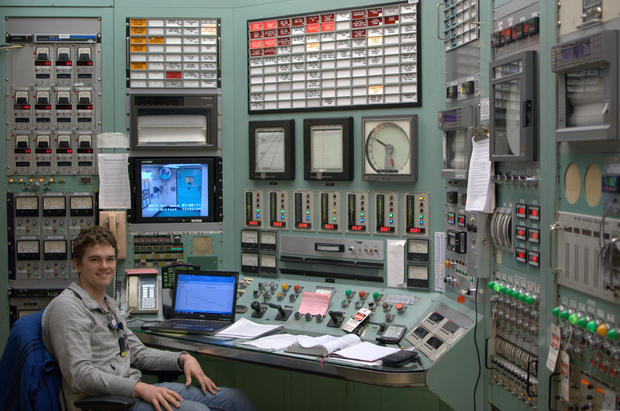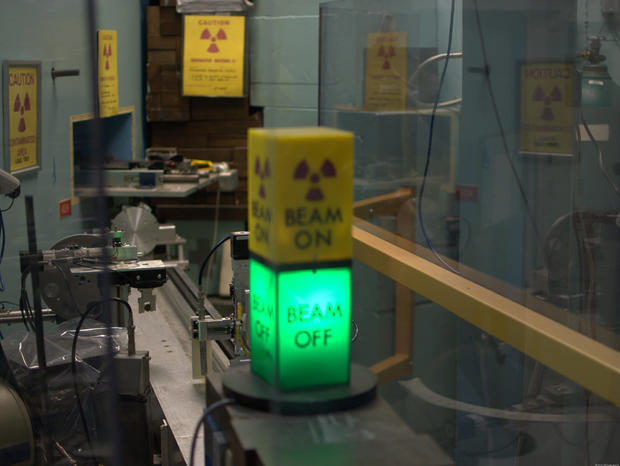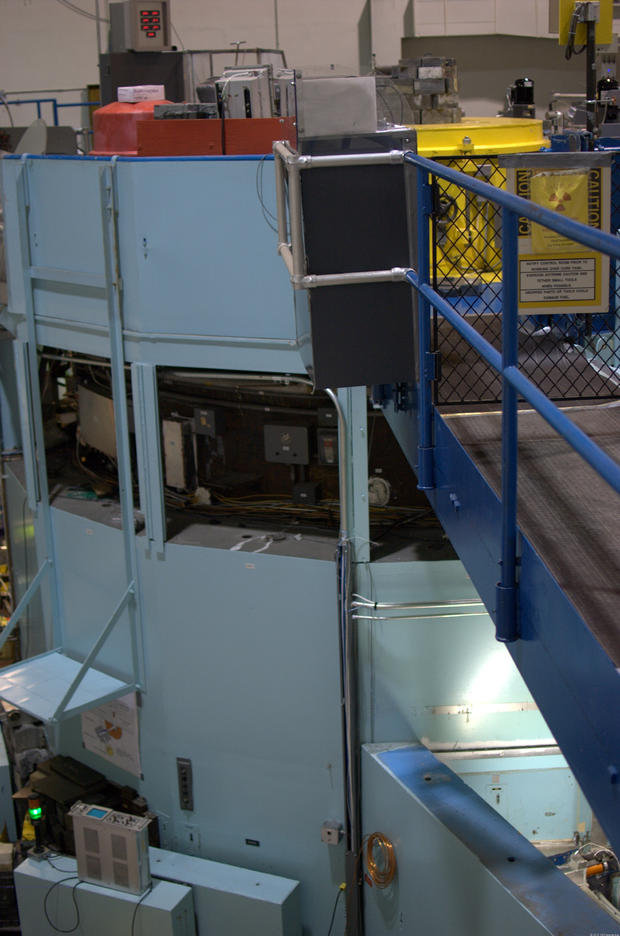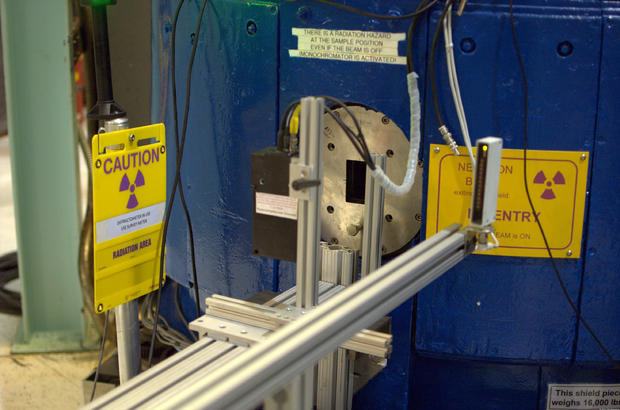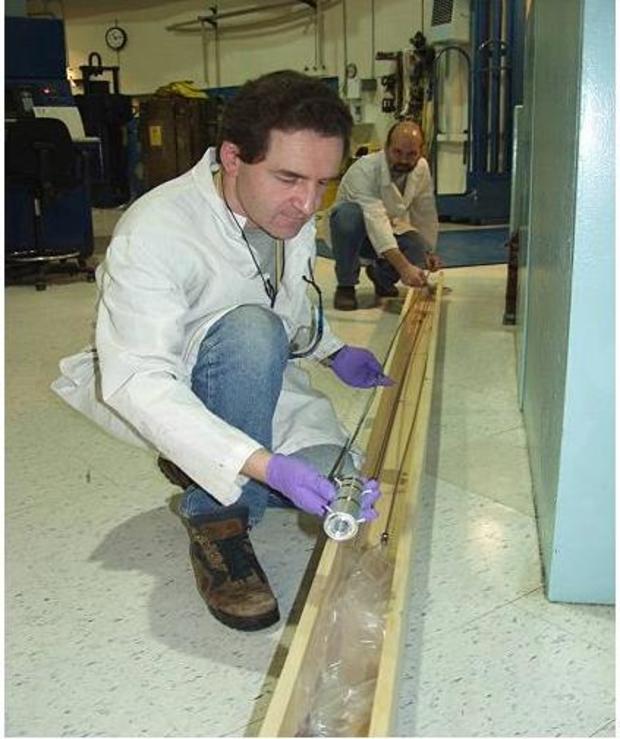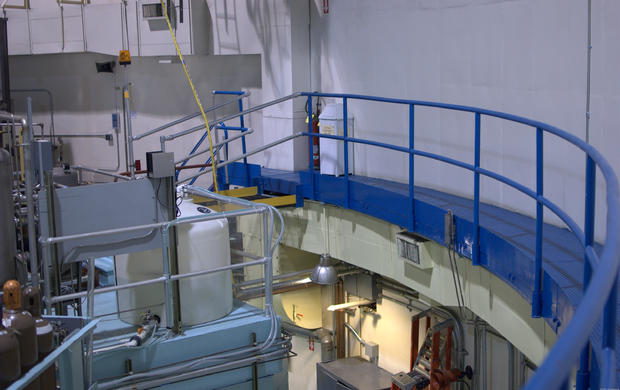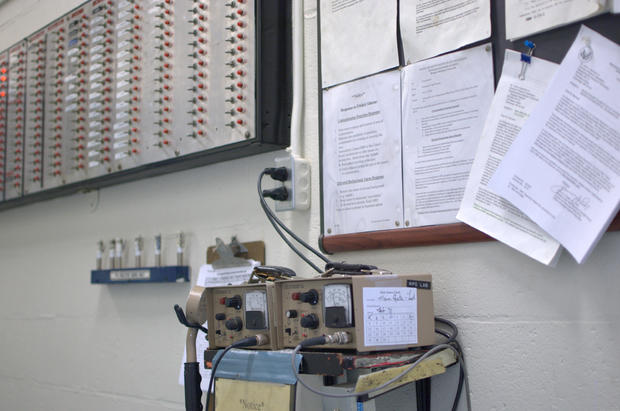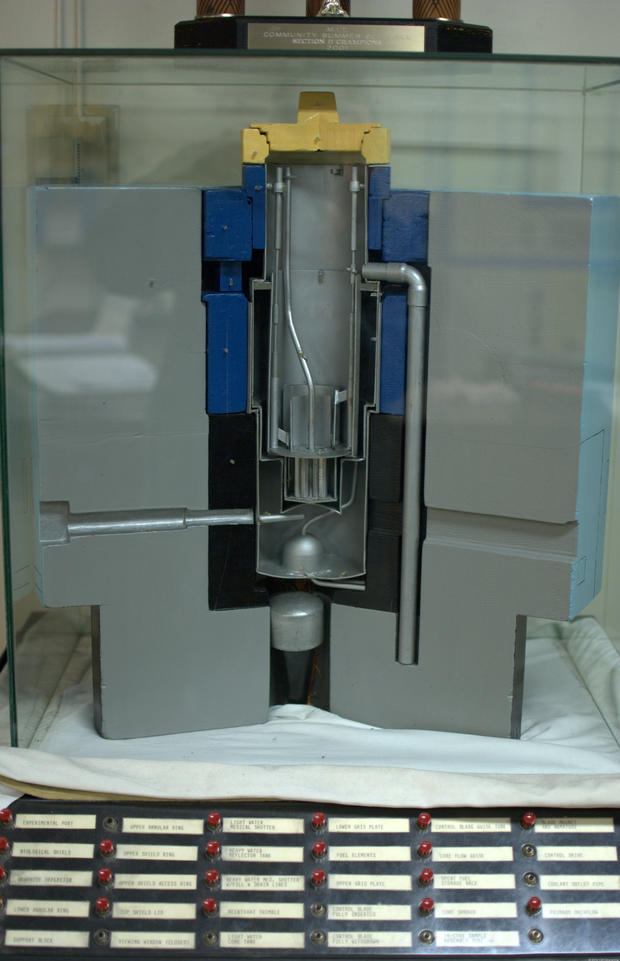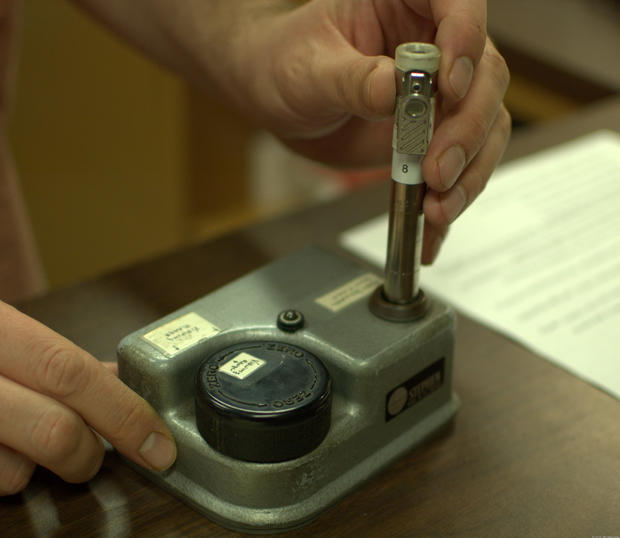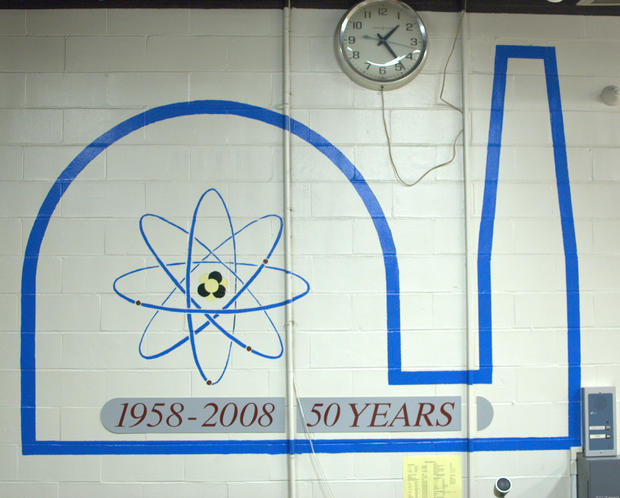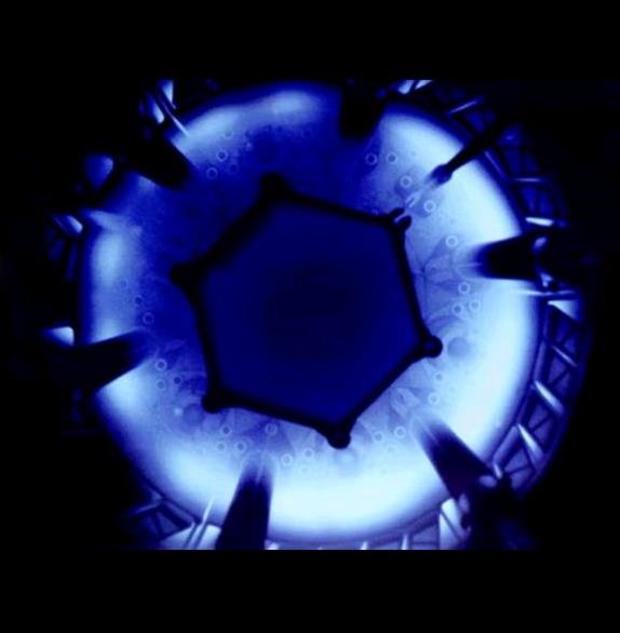MIT's Nuclear Reactor
The Massachusetts Institute of Technology has been operating the Nuclear Research Reactor on its campus in Cambridge, Mass., since 1958. Its stream of neutrons is used for various types of research--medical, imaging, nuclear power plant experiments.
Here is the inside of the control room, where MIT student Brendan Ensor is getting NRC-certified training. In the past 10 years, there have been more students from the U.S. studying nuclear engineering, according to the associate director of research development at the lab.See related article Nuclear research reactor perseveres in city center.
Just off Mass. Ave.
The view of the reactor dome and building from the outside. It's located right in the middle of Cambridge, a few steps from the main thoroughfare Massachusetts Avenue.
Though it's still around after decades, it has caused moments of friction between the city and MIT. After the 9/11 attacks, for example, the city council held emergency hearings to better understand the security of the facility. MIT has committed to changing from using highly enriched uranium to a fuel with a lower density of enriched uranium by 2015.
Neutron spectrometer
The reactor, which can generate up to five megawatts of thermal power, was never designed to produce electricity. Instead, its main product is beams of neutrons, which come from splitting the uranium in the core. The beams come out in devices such as this for study into the nature and structure of materials as well as for medical and nuclear power experiments.
Reactor inside
This is the view of the top of the reactor (yellow on right) and the entire structure in which it's housed. At only about 15 inches wide, the reactor itself is tiny compared with commercial power plants. It's held in a tank of heavy water, which reflects neutrons back into the core to maintain nuclear fission, or atom splitting. That tank is covered in graphite; then in a layer of a special kind of concrete; then in metal shielding. Photography in the facility is restricted to certain areas and specific angles for security reasons.
Remotely controlled experiments
This is a neutron diffractometer that's also used by students studying the physics of subatomic particles. The machine can adjust the elevation of the neutron beam coming from the core to observe different energy levels, for example.
This one machine is significant in that it's part of a Microsoft-sponsored project called iLab, where expensive lab equipment can be remotely operated. Control of the neutron beam itself, of course, is done on site.
Advanced experiments
Apart from student and faculty experiments, the research reactor does work for outside groups. One new area of focus is in-core research, done in conjunction with Idaho National Laboratory, to test new materials and fuels for nuclear reactors. The pictured device is placed into the MIT research reactor to expose different materials to neutron flux and gamma ray radiation. Researchers can control the temperature and pressure.
View from above
The containment building is cylindrical and has a walkway around the edges. On the left, you can see some of the stations for experiments. The facility is operated 24 hours a day, and operations, such as outages, are scheduled weeks and months in advance.
Geiger counter
On the way out, people need to check to make sure they didn't pick up any radioactive contamination. This Geiger counter is used to check hands, and there's another device for checking the soles of shoes. The board behind it was rescued from the trash and put in place for security. It's a board with switches for employees' names, which serves as a reliable way to know who is in the reactor at all times.
Fuel cladding
This is a cutaway model of the fuel elements used inside the reactor, which are about two feet long. Now highly enriched uranium is put inside aluminum cladding, but another fuel that uses less enriched uranium is being developed.
The spent fuel from the reactor is replaced about every three years and transported via police escort to a facility in South Carolina.
Irradiation room
Inside the room on the left, the research reactor did tests on treating cancer patients with a beam of neutrons using a technique called boron neutron capture therapy designed to kill cancer cells. The lab has shifted the primary focus of research from this, which requires patients to come in, to focus more on nuclear power applications, according to the director.
Core
A model of the core, at the reception desk of the MIT nuclear research reactor. The core itself is about 15 inches wide at the bottom. The current core, installed in 1975, replaced the original, which is why the facility is called MIT Reactor 2.
MIT Reactor 1
This is one of a few photos uncovered during a renovation in the MIT Nuclear Research Reactor lab building. It shows the construction of the first reactor, which was completed in 1958. From this photo you can see the beam ports where streams of neutrons come out from the central core.
Analog radiation monitor
Some of the equipment in the research reactor has been in place for years, including this radiation monitor. Inside there's a filament and an electrode. If there's a significant amount of radiation exposure, it will cause a change in the electric field and move the filament, letting people measure their radiation exposure. Employees use electronic monitors.
Fifty years
The entrance of the research reactor features a painting celebrating the facility's 50-year anniversary. Its mission has changed over the years, with the reactor doing both academic and commercial research work.
Cerenkov Radiation
This photo was taken in the dark of the reactor core. It demonstrates what's called Cerenkov radiation, which is caused by energy given off from particles involved in nuclear fission.
